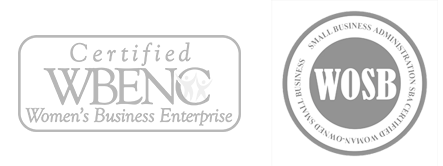REGARDLESS OF THE STRENGTH of the sales pitch, or even the quality of the products and services, the reality is that people buy from those they like and trust. The challenge for sales professionals is to master the art of instant rapport with someone you may be meeting for the very first time, instead of leaving it to chance. What is rapport? It’s the point at which your prospects understand you and believe that you understand them. The majority of buying decisions are made primarily for emotional reasons, including feelings of trust and rapport. Once these intangible feelings are in play, most prospects will seek out rational justification for the emotional decisions they’ve already made. Without rapport, many buyers feel so uncomfortable that they aren’t likely to buy — even if they really want the product. When meeting a prospect for the first time, remember that most first impressions are made within eight seconds. Walk toward your prospect assertively, offering your hand. Make sure you’re dressed one step above what prospects might expect, so that your prospects immediately see you as a valuable business partner. Kick off the conversation with open-ended, rapport-building questions designed to help you understand your prospect better. Don’t talk too much about yourself. Remember that dominating the conversation is the quickest way to derail rapport. Demonstrate active listening skills by making regular eye contact, taking notes, avoiding distractions, repeating what you heard and asking thoughtful follow-up questions. Research shows that 70 to 90 percent of communication is non-verbal. If your prospect’s body language doesn’t align with what he is saying, trust his body language. Ask questions to uncover why the prospect may be hesitant. You can also use body language to communicate that you think like your prospect by mirroring and matching nonverbal cues. If your prospect is leaning forward intently, you should lean forward, too. If your prospect is gesturing widely when she talks, match her style. Match your prospect’s tone and tempo as well. For example, if your prospect speaks quickly, pick up your pace. While this can certainly be overdone, and your synchronization should be subtle, mirroring and matching your prospect’s non-verbal hints will make that person feel connected to you. In the end, confidence can lead to rapport. During your very first conversation with your prospect, act like you already have a rapport. If you talk with prospects as if they are already close friends you care about, you are more likely to break down barriers and create a connection quickly.
Recent Posts
- The Confidence Gap: How to Inspire Your Team to Own the Numbers
- Hire, Fire, and Reward Based on Outcomes: The Only Way to Build a Growth Team
- Why Weekly Optimization Separates Winners from Losers
- The Domino Effect: What Happens When You Reposition Your Brand
- Why Leaders Must Demand Accountability for MROI Projections
Related Posts
 Marketing StrategyOtherSales
Marketing StrategyOtherSales
One Team, One Dream
TEAMWORK: every highly successful team gets just how important it is to propelling an organization…
RedRover Sales & MarketingApril 23, 2024
 Marketing StrategyOtherSales
Marketing StrategyOtherSales
Marking Your Territory
I BET you didn’t think your dog could teach you anything about marketing. I’ve learned…
RedRover Sales & MarketingApril 23, 2024
 OtherSales
OtherSales
The Brain Bone’s Attached to the Wallet Bone
LOOKING AT YOUR BRAIN Neuromarketers can predict how you’ll respond to advertising. While it may…
RedRover Sales & MarketingApril 23, 2024




